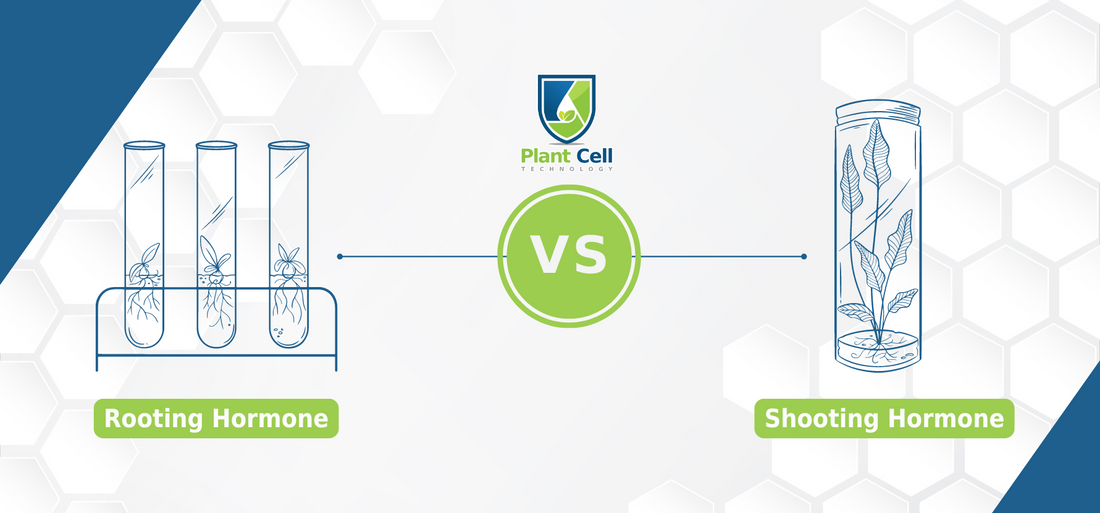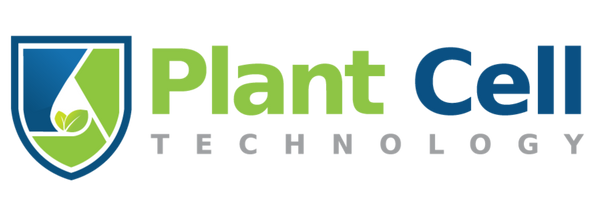
Rooting Vs Shooting Hormones
As a content and community manager, I leverage my expertise in plant biotechnology, passion for tissue culture, and writing skills to create compelling articles, simplifying intricate scientific concepts, and address your inquiries. As a dedicated science communicator, I strive to spark curiosity and foster a love for science in my audience.


Introduction
Did you know that plant tissues can regenerate their organs under lab conditions? Plants possess a remarkable ability known as totipotency, which allows them to regenerate entire organs from a single cell. This unique characteristic makes plant tissue culture a valuable technique for propagating and studying plants in controlled laboratory conditions.
Key Factors Influencing Organ Regeneration
- Nutrients: Plants require a balanced supply of essential nutrients, including macronutrients (nitrogen, phosphorus, potassium) and micronutrients (iron, zinc, manganese, etc.), to support growth and development.
- Phytohormones: These plant hormones play a crucial role in regulating various aspects of plant growth, including organ regeneration. Auxins, cytokinins, and gibberellins play crucial roles as key phytohormones in this process.
- Environmental Conditions: Factors such as light intensity, temperature, humidity, and pH can significantly influence plant tissue regeneration.
This article expands more on the types of plant hormones or phytohormones and how they are used in tissue culture. So, let’s begin!

Introduction to Phytohormones
Plant hormones, or phytohormones, are small molecules that play a vital role in regulating plant growth and development. The study of plant hormones dates back to the early 20th century when scientists began investigating the factors that influence plant growth and development. Through careful experimentation, researchers discovered that certain substances produced by plants could have profound effects on their growth and behavior.
One of the earliest discoveries in the field of plant hormones was the identification of auxin, a substance produced in the plant's growing tips that promotes cell elongation and root development. This breakthrough paved the way for further research into other plant hormones and their functions.
Over the years, scientists have identified a variety of plant hormones, each with its own unique role in regulating plant growth and development. These hormones work together in complex networks to coordinate various physiological processes, ensuring that plants can adapt to changing environmental conditions and thrive.
Types of Phytohormones and Their Roles
Do you know apart from five classes of plant hormones—auxin, cytokinin, gibberellins, abscisic acids, and ethylene, there are some more that plants produce?
It includes brassinosteroids, polyamines, jasmonic acids, salicylic acids, and strigolactones.
Following are the roles and functions of these hormones in the plants:
Auxin
Auxins stimulate cell elongation and root development, playing a crucial role in plant growth and directional responses like phototropism (growth in response to light) and gravitropism (growth in response to gravity). They also aid in vascular tissue differentiation and help maintain apical dominance by delaying leaf senescence.
Cytokinin
Cytokinins promote cell division, initiate shoot growth, and stimulate leaf expansion, working in tandem with auxins to regulate overall plant development. They delay leaf senescence (aging), enhance chlorophyll production, and contribute to bud formation and tissue development.
Gibberellins
Gibberellins are key for stem elongation, seed germination, and breaking dormancy. They stimulate cell division and elongation, influence flowering, and contribute to fruit development, enhancing overall plant height and size.

Ethylene
Ethylene regulates fruit ripening, flower opening, and stress responses in plants. It mediates the "triple response" in seedlings, controls leaf and fruit abscission, and activates defense mechanisms against injury or pathogens.
Abscisic Acid
Abscisic acid is a stress response hormone that helps plants cope with drought by closing stomata to reduce water loss. It inhibits shoot growth, induces seed dormancy, and promotes root growth under stress conditions.
Brassinosteroids
Brassinosteroids are essential for plant growth and development, promoting stem elongation, pollen tube growth, and leaf unrolling. They play a critical role in plant fertility and delay senescence. Additionally, brassinosteroids regulate processes like proton pump activation and cellulose microfibril orientation, contributing to overall plant health.
Polyamines
Polyamines are vital for cell growth and development, stimulating DNA, RNA, and protein synthesis. They influence key physiological processes such as cell division, root initiation, embryogenesis, and stress tolerance. Polyamines also play a role in flowering, fruit development, and plant defense against viral and fungal infections.
Jasmonic Acid
Jasmonic acids are crucial for plant defense, particularly against insects and pathogens, by inducing the synthesis of proteinase inhibitors. They also regulate growth processes, inhibiting seed germination and promoting senescence, abscission, tuber formation, and fruit ripening. Additionally, jasmonic acids are essential for male reproductive development and coordinating floral organ growth.
Salicylic Acids
Salicylic acids are key in plant defense, triggering the production of pathogenesis-related proteins and systemic acquired resistance (SAR) to protect against pathogens. They also play a role in thermogenesis, particularly in certain flowering plants like the voodoo lily, aiding in pollination.
Strigolactones
Strigolactones regulate plant development by coordinating growth according to nutrient availability, particularly by promoting symbiotic relationships with Arbuscular Mycorrhizal fungi. They suppress secondary shoot branching, regulate root growth and hair elongation, and contribute to leaf senescence, all while interacting with auxins to modulate plant architecture.

Types of Hormones Used In The Tissue Culture Process
Did you know that out of the ten hormones mentioned above, only two are extensively used in tissue culture? Additionally, a few others are occasionally used depending on the specific requirements or experiments.
Yes, auxin and cytokinin are the only two types of hormones that are extensively used in tissue culture experiments. Researchers often use gibberellins in experiments.
Auxin Used In Tissue Culture
Auxins play a crucial role in promoting root growth, making them essential in plant tissue culture. By utilizing synthetic auxins, scientists can encourage root formation in stem cuttings and plantlets within controlled environments. Because of the application of auxin in root regeneration, the hormone is also known as rooting hormone.
Here's a breakdown of how different types of auxins are applied:
- Indole-3-acetic acid (IAA): The primary natural auxin, IAA stimulates cell division, elongation, and root formation.
- Indole-3-butyric acid (IBA): A synthetic auxin known for its effectiveness in inducing root initiation in cuttings and plantlets.
- 1-Naphthaleneacetic acid (NAA): Often used in combination with cytokinins to promote shoot proliferation and root development in callus cultures.
- 2,4-Dichlorophenoxyacetic acid (2,4-D): A synthetic auxin with a broader range of applications but restricted due to environmental concerns.
By strategically applying these auxins, scientists can effectively manipulate plant growth and development in tissue culture, enabling rapid plant propagation and genetic improvement.

Cytokinin Used In Tissue Culture
Cytokinins play a pivotal role in tissue culture, particularly in stimulating cell division and shoot formation. Since cytokinins are the leading players in shoot regeneration, they are also known as shooting hormones. Here’s how different types of cytokinins are applied in tissue culture:
- Benzyladenine (BA): A synthetic cytokinin known for its effectiveness in promoting cell division and shoot bud formation. Its water solubility and ease of use make it a popular choice for various tissue culture applications.
- Kinetin: Discovered from herring sperm DNA, kinetin is a potent inducer of cell division and shoot proliferation. It's often used in combination with auxins to achieve optimal results.
- Zeatin: A natural cytokinin that closely mimics the effects of naturally occurring cytokinins in plants. Zeatin is commonly used for shoot proliferation and bud break, especially in certain plant species.
By carefully selecting and applying these cytokinins, scientists can effectively control and optimize the growth and development of plant tissues in culture, leading to successful propagation and regeneration of plants.
Rooting Versus Shooting Hormone
A common question among beginner plant culturists is, "What’s the difference between rooting and shooting hormones, and how do they affect tissue culture?" Understanding this distinction is key to successful plant propagation in lab conditions.
Shooting Hormones: Cytokinins
During the multiplication phase of tissue culture, the focus is on generating new shoots. This is where cytokinins come into play. Cytokinins are plant hormones that promote cell division and shoot formation.
In tissue culture, the most commonly used cytokinins include natural forms like zeatin, 2-iP (isopentenyl adenine), dihydrozeatin, and zeatin riboside. Synthetic analogs such as kinetin and BAP (benzylaminopurine) are also widely used due to their effectiveness in promoting shoot proliferation.
In this phase, a higher cytokinin-to-auxin ratio is critical. This hormone balance encourages the plant cells to form shoots, which will later develop into new plants. The careful adjustment of this ratio is crucial, as it determines whether the cultured tissue will produce multiple shoots or remain dormant.
Rooting Hormones: Auxins
Once shoots have been successfully developed, the next phase is rooting. Rooting media is formulated to encourage root formation in the shoots that have already been generated. Auxins are the primary hormones responsible for root induction. The most commonly used auxins in tissue culture are 1-Naphthaleneacetic acid (NAA), Indoleacetic acid (IAA), and Indole-3-butyric acid (IBA).
In this phase, the media is adjusted to have a higher auxin-to-cytokinin ratio. This shift in balance promotes root development, enabling the plantlets to establish a strong root system, which is essential for their survival when transplanted to soil.
The Importance of Hormone Ratios
The interplay between auxins and cytokinins is a delicate balance. A high auxin-to-cytokinin ratio favors root formation, while a high cytokinin-to-auxin ratio encourages shoot formation. Interestingly, at intermediate levels of both hormones, callus formation—a mass of undifferentiated cells—can occur, which can then be directed to form either roots or shoots based on the hormonal environment.
Additional Considerations
It's important to note that the effectiveness of these hormones can vary depending on the plant species and even the specific tissue being cultured. Experimentation and fine-tuning of hormone concentrations may be necessary to achieve optimal results for different plants.

Where Can You Find High-quality Plant Hormones For Your Tissue Culture Experiments?
Plant Cell Technology is your go-to partner for all things tissue culture.
As a leader in the field, we offer a wide range of comprehensive solutions and products designed to simplify your tissue culture process and boost your lab's productivity.
Our store is stocked with everything you need to conduct successful tissue culture experiments. From MS media and agar to PPM™, plant hormones, and gellan gum, we’ve got you covered. Plus, we offer the Biocoupler™, a unique and user-friendly bioreactor that ensures rapid and healthy multiplication of your plants.
Expert Consultation at Your Fingertips
Stuck at a crucial stage in your tissue culture project? Our expert consultation services are here to help. Simply book an appointment, and one of our tissue culture specialists will guide you through your challenges in a personalized one-on-one video call.
Master Classes Tailored for Success
Take your tissue culture expertise to the next level with our Master Classes, custom-designed to meet your needs. Guided by seasoned professionals, these classes not only provide hands-on training in tissue culture techniques, but also cover plant handling, aseptic practices, and, importantly, highlight crucial pitfalls to avoid when incorporating this technology into your business. Our goal is to equip you with the knowledge and skills to thrive in the growing plant market.
Ready to enhance your tissue culture skills? Explore our upcoming Master Classes through this link!
Blog Categories
View by Level
Popular Blogs

How Samantha Bridges the Gap Between the Nursery and the Lab
The Introduction Building a tissue culture program from the ground up requires more than just scientific knowledge—it requires the grit...
Read More
Understanding The Synthetic Seed Technology
Introduction Let’s be honest: traditional plant propagation can be a logistical nightmare. If you’re working with recalcitrant species—those stubborn plants...
Read MoreSubscribe to Our Newsletter
1 comment
IS there a possibility tonprepare PHD thesis onthis theme ?








Join the conversation
Your email address will not be published. Required fields are marked